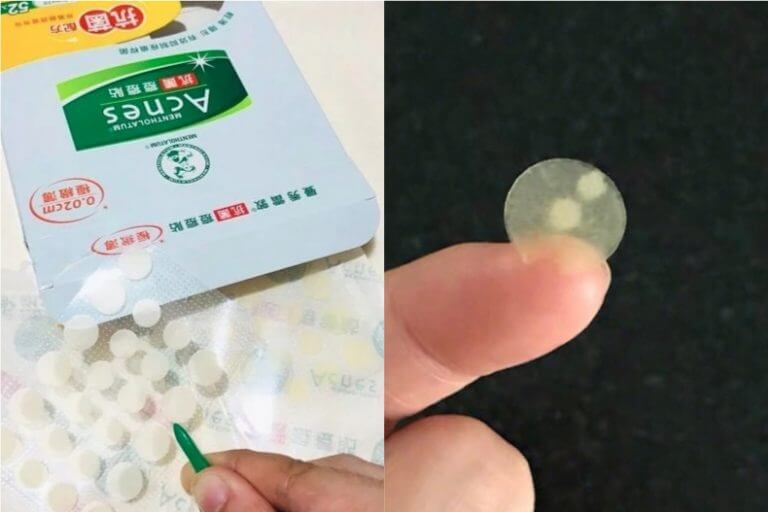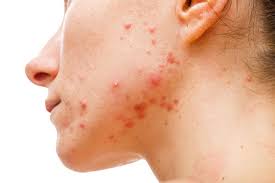- Home
- Trend
- Weight Loss Strategies
- Acne Tips
- Hair Health Information
- Blemish Removal Tips
- Acne Scar Removal Tips
- Muscle Building Techniques
- Intimate Care Tips
- Postpartum Intimate Care
- Eye Bags Wiki
- Tips for Face Slimming
- Secret of Permanent Hair Removal
- Breast Enlargement Tips
- Cure to Snoring
- Marionette Lines
- Skin-Tightening Secrets
For many women, acne patches are a familiar go-to product — they’re affordable, easy to buy, and simple to use. Just stick one over the pimple, and it can visibly reduce redness and swelling. During the pandemic, when everyone was wearing masks, acne patches also served to shield blemishes from friction and prevent infection. It’s no wonder most women keep a box or two at home “just in case.”
But do you truly understand how acne patches work? Do you know the correct way to use them, which types of acne they work best on, or whether they’re suitable for your skin type? This article will answer all those questions, clear up common misconceptions about acne patches, and introduce a high-value treatment alternative that may work even better.
Before Using an Acne Patch: What Exactly Is Acne?

Before diving into acne patch usage, let’s understand acne itself. Acne forms when dead skin cells clog your pores, trapping sebum beneath the skin. This creates the perfect environment for acne-causing bacteria to thrive, leading to inflammation and breakouts. Hormonal fluctuations, like those during menopause or from testosterone use, can also trigger acne. If not properly treated, breakouts may leave behind dark marks or permanent scarring.
Before Using an Acne Patch: Know Your Acne Types

Not all acne is the same — identifying the type of acne you have is essential for choosing the right treatment. More severe forms often require professional care. Common acne types include:
• Nodular Acne
Typically appears on the cheeks as dark or light red, raised bumps that are dome- or cone-shaped.
• Papular Acne
Small, raised red bumps resembling soybeans or pinheads, sometimes with whiteheads. Caused by a buildup of oil, bacteria, and debris. Common on the face, chest, and back.
• Cystic Acne
Inflamed, swollen bumps filled with pus or fluid, but without a visible whitehead. Can appear reddish and painful.
• Pustular Acne
Evolves from papules, starting as small blisters that eventually fill with pus.
• Confluent Acne
A mix of multiple acne types that merge together and cause significant inflammation or infection.
免費體驗
Acne Treatment
1 Minute Self-Registration
Date should not be before minimal date
Before Using an Acne Patch: What Is It and What Does It Do?
Acne patches are essentially mini hydrocolloid dressings — a thinner version of medical-grade wound coverings. They work by sealing off the blemish from external contaminants, locking in moisture, softening dead skin, and helping active ingredients penetrate more effectively. The result: reduced swelling, faster healing, and less chance of infection.
Before Using an Acne Patch: Two Main Types
There are medicated and non-medicated acne patches.
• Medicated patches typically contain salicylic acid or antibacterial agents. These ingredients can reduce inflammation and inhibit bacterial growth, especially in a sealed environment. However, they may irritate sensitive skin or cause reactions in those allergic to such ingredients.
• Non-medicated patches are more commonly used. They don’t treat acne directly but absorb pus and fluids while shielding the wound from external irritants. If the blemish isn’t properly cleaned beforehand, these patches can trap bacteria and worsen inflammation.
Regardless of type, acne patches may irritate the skin and should always be removed within the time recommended on the packaging.
Which Acne Types Are Suitable for Patches?
Although acne patches are convenient, they're not suitable for every acne type.
There are three main categories:
1. Papular Acne – small, red bumps with no pus
2. Pustular Acne – visible whitehead or pus
3. Cystic Acne – hard, inflamed bumps with no pus (aka “stone acne”)
Acne patches are only suitable for pustular acne, especially when the pus has already surfaced or the spot has ruptured. They’re not appropriate for cystic acne, as the sealed environment could worsen the inflammation and cause deeper infection.
免費體驗
Acne Treatment
1 Minute Self-Registration
Date should not be before minimal date
How to Use Acne Patches Properly
To get the most out of your acne patch, follow these steps:
Step 1: Remove makeup and cleanse thoroughly. Keep your skincare routine minimal — just use a calming toner if needed.
Step 2: If necessary, gently extract the pus using a tool, then disinfect with saline or tea tree oil.
Step 3: Apply the patch, centering it over the acne spot.
Step 4: Don’t apply creams or lotions beneath the patch — this reduces adhesion and effectiveness.
Pro Tips for Better Results
• Always clean the spot with saline before applying a patch, whether the pimple is broken or not.
• If using a non-medicated patch, apply acne cream or tea tree oil first, then let it fully absorb before applying the patch.
• Monitor the patch — when it turns white, it’s saturated and should be replaced. Never wear for more than 12 hours.
Choosing the Right Patch for Your Needs
Originally designed for overnight use, acne patches were thick and didn’t prioritize appearance. However, more people now wear them during the day under makeup to prevent further irritation. In these cases, thinner and more transparent patches are ideal. Choose a patch based on thickness, transparency, and how well it adheres to your skin.
免費體驗
Acne Treatment
1 Minute Self-Registration
Date should not be before minimal date
Can You Wear Makeup Over an Acne Patch?
Both medicated and non-medicated patches are fine for acne with visible pus. They absorb fluids while maintaining breathability and promoting healing. If you want to wear makeup, opt for ultra-thin invisible patches with a tapered edge. They won’t show or interfere with foundation, and they still protect and absorb effectively.
Are Acne Patches Suitable for Cystic (Stone) Acne?
As discussed earlier, cystic acne typically lacks pus and is deep, red, and painful. Because the inflammation is trapped below the skin, pressing or squeezing won’t help and may cause scarring. Acne patches don’t work well in these cases. Instead, consider medicated patches with salicylic acid or specialized microneedle patches that can deliver anti-inflammatory ingredients deeper into the skin.
Should You Squeeze the Pus Before Applying a Patch?
If the whitehead is already visible, it’s okay to gently extract the pus using a clean tool, followed by disinfection. Make sure the wound is clean before applying the patch. It will then absorb residual fluid and promote healing in a sterile environment.
免費體驗
Acne Treatment
1 Minute Self-Registration
Date should not be before minimal date
No Patch? No Problem — A Better Way to Treat Acne
While acne patches are helpful, they’re not a one-size-fits-all solution. For those looking for a faster, more effective treatment that suits all skin types, Perfect Medical’s Acne Treatment is a standout option.
This non-invasive, drug-free treatment uses dual-spiral suction technology to:
• Gently exfoliate and remove dead skin and impurities
• Infuse medical-grade essence deep into the skin
• Activate collagen repair
• Calm inflammation, kill bacteria, hydrate, and balance oil production
• Clear clogged pores and dissolve blackheads and whiteheads
It’s safe, painless, and suitable for all skin types — and it works fast. Sign up now for a FREE trial of the Acne Treatment!
Sign Up Now: Perfect Medical Acne Treatment免費體驗
Acne Treatment
1 Minute Self-Registration
Date should not be before minimal date
FAQ

What is acne?
Before using acne patches, do you really understand what acne is and how it forms? If you're not entirely sure, the following explanation is for you. Acne develops when dead skin cells clog the pores, blocking the release of sebum. This buildup of oil beneath the skin leads to the formation of comedones or blackheads—an ideal environment for acne-causing bacteria to thrive. As the bacteria multiply, inflammation sets in, triggering visible acne. Besides clogged pores, hormonal fluctuations during menopause or the use of androgens (male hormones) can also lead to breakouts. If not properly treated, even when the acne clears, it can leave behind marks or permanent pitted scars.
What is an acne patch and what does it do?
An acne patch is essentially a thin, transparent version of medical-grade artificial skin. In clinical settings, it's used as a wound dressing. Its purpose is to create a sealed environment that isolates the acne wound from external bacteria, preventing infection. At the same time, it locks in moisture in the outer skin layer, softens dead skin, and allows active ingredients to penetrate more effectively. This helps reduce inflammation and promotes healing.
What types of acne are suitable for acne patches?
Acne generally falls into three categories: Papules, which are small red bumps without pus; Pustules, which contain visible white or yellow pus; Cystic acne, commonly known as stone acne, which appears as large, inflamed, and hardened bumps without pus. Acne patches, whether medicated or not, are only effective for pustules—especially when the skin has already broken. They are not suitable for other types of acne like cystic acne. In fact, the sealed environment created by the patch can worsen inflammation in cystic acne, potentially turning it into a severely infected, large “stone pimple” by the time the patch is removed.
How does the Perfect Medical Acne Treatment work?
Perfect Medical’s Acne Treatment offers a professional and effective approach to acne management. It works by delivering medical-grade essences deep into the skin using vacuum dermabrasion technology. This method thoroughly cleanses the pores by removing built-up oil and debris—without causing pain or damage. In addition, a purifying solution is infused to help unclog pores and balance sebum production. The treatment is gentle on the skin and rapidly stimulates collagen regeneration, which helps prevent future blockages. When followed by proper skincare and hygiene, this treatment yields noticeable and long-lasting improvements in acne.
Does the Acne Treatment hurt?
The Acne Treatment is non-invasive, making the entire process painless and free from any skin damage. It uses a unique vacuum dermabrasion technique to gently exfoliate the skin, removing dead cells and impurities. This not only improves existing acne but also helps prevent new breakouts by clearing the pores. Since there’s no intense discomfort during the procedure, it’s a great option for those looking for a pain-free acne solution.









